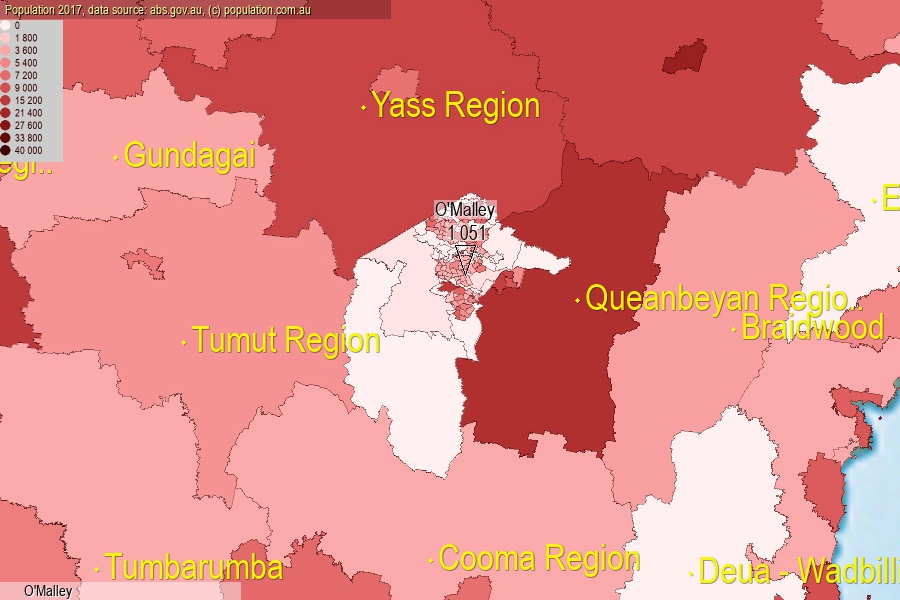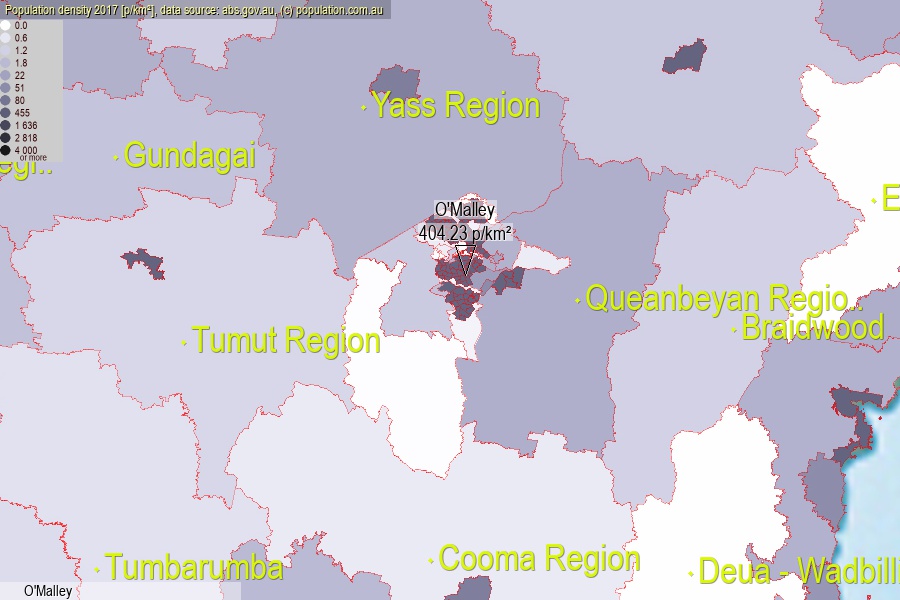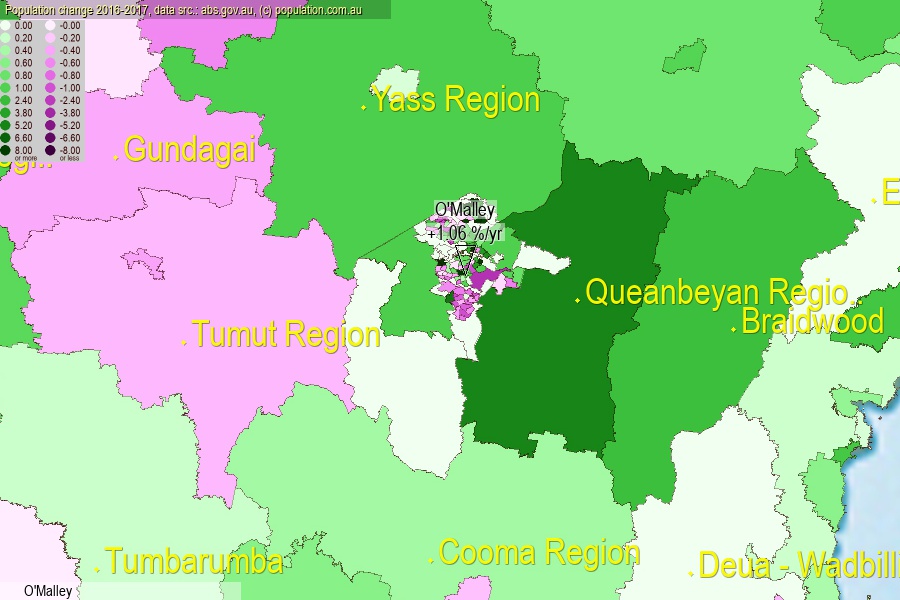 population.com.au
population.com.auLast official estimated population of O'Malley (as Statistical Area Level 2) was 1 051 people (on 2017-06-30)[2]. This was 0.00% of total Australian population and 0.251% of ACT population. Area of O'Malley is 2.60 km², in this year population density was 404.23 p/km² . If population growth rate would be same as in period 2016-2017 (+1.06%/yr), O'Malley population in 2025 would be 1 143. [0]



Click to enlarge. O'Malley is located in the center of the images.
Population [people], population density [p./km²] and population change [%/year] [2]
View borders » (new window) [4]
[1991-1992] +15.33 %/Yr.
[1992-1993] +5.51 %/Yr.
[1993-1994] +6.91 %/Yr.
[1994-1995] +5.75 %/Yr.
[1995-1996] +5.30 %/Yr.
[1996-1997] +6.32 %/Yr.
[1997-1998] +3.88 %/Yr.
[1998-1999] +4.91 %/Yr.
[1999-2000] +1.78 %/Yr.
[2000-2001] +1.53 %/Yr.
[2001-2002] -4.09 %/Yr.
[2002-2003] -5.51 %/Yr.
[2003-2004] -4.16 %/Yr.
[2004-2005] -5.09 %/Yr.
[2005-2006] -1.05 %/Yr.
[2006-2007] +3.70 %/Yr.
[2007-2008] +5.99 %/Yr.
[2008-2009] +7.21 %/Yr.
[2009-2010] +3.25 %/Yr.
[2010-2011] -0.54 %/Yr.
[2011-2012] +3.17 %/Yr.
[2012-2013] +2.75 %/Yr.
[2013-2014] +1.65 %/Yr.
[2014-2015] +2.23 %/Yr.
[2015-2016] +3.07 %/Yr.
[2016-2017] +1.06 %/Yr.
[0] Calculated with linear interpolation from officially estimated population
[1] Read more about SA2 and Australian Statistical Geography Standard (ASGS) on abs.gov.au
[2] Population data from Australian Bureau of Statistics (Population and density: 2017; change: 2016-2017)
[3] Digital Boundaries: Australian Statistical Geography Standard (ASGS) 2016.
[4] Border coordinates are simplifyed using Ramer-Douglas-Peucker algorithm.